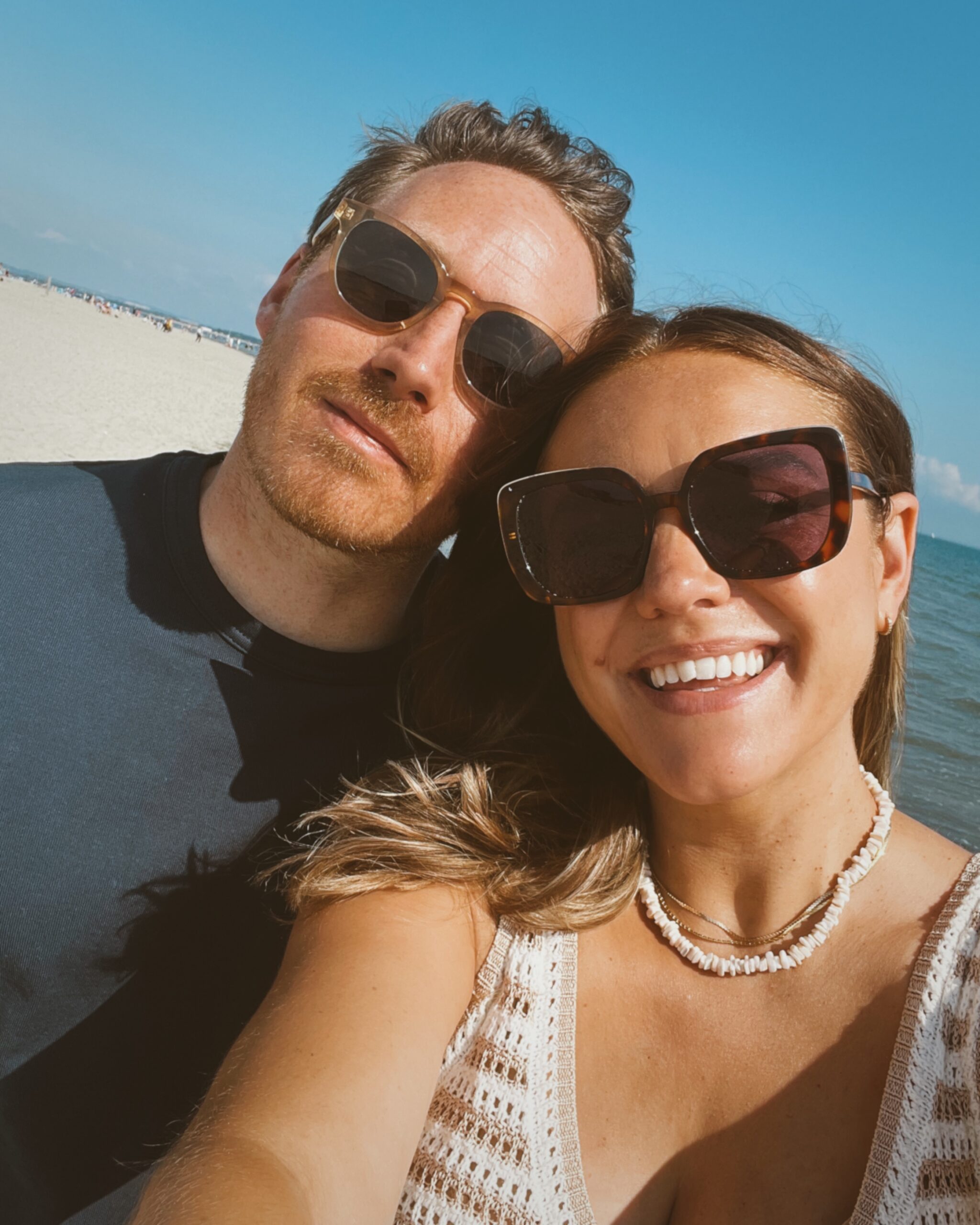
Today marks exactly one month since Oli and I first learnt that doctors suspected our son, then 28 weeks in utero, has achondroplasia. Achondroplasia, if you don’t know—and we didn’t before our own experience of it—is more customarily known as the most common form of dwarfism. In the weeks since, we’ve been through numerous appointments, scans and a blood test to confirm that our son does indeed have achondroplasia. As two parents who don’t have achondroplasia, having a child that does is incredibly rare. There’s around a 1 in 40,000 chance that our baby would have this particular gene mutation.
Below, I’m sharing our experience thus far; how we first learnt that something was different with our son’s development and the scans and blood test we went through to gain confirmation. I’m also sharing what that means for the balance of my pregnancy and the future of our family life altogether.
To note, before we go further, I’m currently 32-and-a-half weeks pregnant and Oli and I are on our babymoon. We’re expecting our baby boy to join us in around six weeks time and we are over the moon to be welcoming him into our family.
As we walked along the beach this morning, we were reflecting on just how wild the past month has been. Since learning of the suspected-then-confirmed achondroplasia diagnosis, we’ve had to tap into a deep-rooted strength—both individually and as a couple—we’ve not often had to call upon before. I am so proud of us, our family and our baby boy. This has been the hardest thing we’ve ever had to go through.
The below documents our experience of receiving an achondroplasia diagnosis. Some of the details may be difficult to read; please be mindful if you feel that reading this may be triggering for you.
Our 28 week scan: the first indication
Prior to any achondroplasia-related concerns, I already had extra growth scans booked in for the latter stages of my pregnancy.
As a newborn myself I was born with holes in my heart and I have a blood clotting condition, both of which meant that my pregnancy was marked as ‘high risk’ even though doctors didn’t deem me to be generally ‘high risk’. Both of these concerns—our baby’s heart health and my blood clotting condition—were cleared by doctors earlier on in my pregnancy, however the extra growth scans remained in the diary. This, retrospectively, is a fact Oli and I are immeasurably grateful for.
At my 28 week growth scan, I—ironically!—was feeling more relaxed than I had been at any previous scan. I felt, at that point, that we were past the ‘big scans’ and that this one would be more of a general check-in.
Our 28 week scan was booked for 8:50 in the morning. Our sonographer took three key growth measurements for our baby: head circumference (HC), abdominal circumference (AC) and femur length (FL).
The last measurement—the femur—was instantly flagged as abnormal. The sonographer told us that the femur was measuring very short, however she said that it could be a ‘false reading’ due to the baby’s positioning. At this point we still felt lighthearted, we were comforted by the possibility of a ‘false reading’ and were asked to come back for a second scan within the next two weeks.
Before we left the hospital car park, I received a call. We were asked to return later that same day for a follow-up scan.
The first time achondroplasia was mentioned
We had the last appointment of the day at around 5:30pm. We saw the same sonographer that had conducted our 20 week scan. For context, this sonographer is a specialist who looks in great detail for abnormalities. We had seen him previously so that he could check our baby’s heart, which was subsequently cleared of issues.
During our second 28 week scan, our sonographer took measurements for every part of our baby’s body.
Oli and I were both watching the scan screen fixedly, trying to figure out if the measurements were reading as ‘normal’ or not. We truly had no clue what we were looking for, but still we were looking for signs that everything was OK.
At the end of our second scan, our sonographer said that he agreed with his colleague’s assessment that morning: that our baby’s legs were measuring short. He also said that he had measured our baby’s arms, which were also measuring short, and that the shape of his head was slightly more pronounced in the forehead and sunken in the nose.
Oli—who was quicker than me to start putting the puzzle pieces together—asked if our sonographer thought that these measurements indicated something in particular. He nodded, and that’s when we first heard the word “achondroplasia” mentioned.
A suspected achondroplasia diagnosis
Prior to our second scan appointment, I’d never heard the word “achondroplasia”. Our sonographer went onto explain that it’s more colloquially known as the most common form of dwarfism.
People say that when you receive big news in life, or experience a momentous juncture, that it feels like time stands still. You can remember exactly where you were, details of the room, what you were wearing etc. I can recall precisely every detail of that moment.
Hearing about the suspected diagnosis was a monumental shock. In the moments afterwards we were given a lot of information, including the rarity of this condition, what it meant for the next steps of my pregnancy, and possible complications for the future life of our child.
It was the last point that tipped me over the edge. Hearing of the struggles our baby boy may encounter physically, both in utero and after birth, opened the flood gates. We’d gone from thinking that ‘everything is fine’ to learning that he has a condition—at that point unconfirmed—which fell under the ‘skeletal dysplasia’ umbrella.
According to Boston Children’s Hospital “Skeletal dysplasia is a category of rare genetic disorders that cause abnormal development of a baby’s bones, joints, and cartilage. While skeletal dysplasia affects different parts of the body in different children, the areas most often affected include the legs and arms, ribcage, skull, and spine.”
Next steps were to book in for a second opinion scan and explore options for tests that would confirm either way if our baby had achondroplasia.
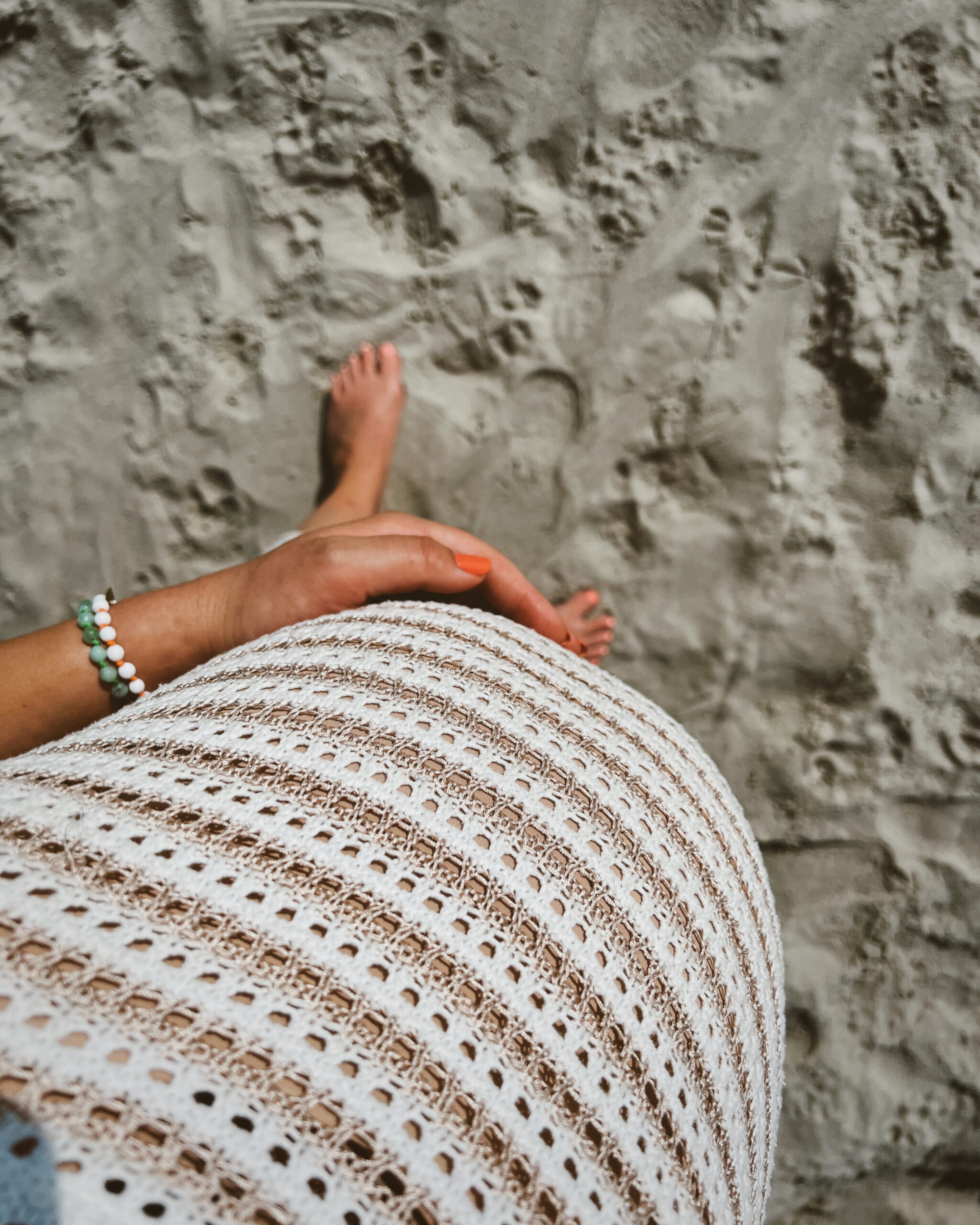
Second opinion scan and testing for achondroplasia
Up to this point all of our NHS scans had been conducted at Winchester hospital. For our second opinion scan to determine the likelihood of achondroplasia we were referred to Southampton hospital, which has a large fetal medicine unit.
Here we met with a doctor who discussed the results thus far and performed another scan. She agreed with her colleague in Winchester hospital that the measurements of our baby were indicating a skeletal dysplasia, most likely achondroplasia.
At this point we felt fairly confident that the diagnosis would turn out to be achondroplasia. However, to gain more certainty we were told of two tests we could take.
The first test was a blood test. This required two blood samples, taken from me, which would be sent to Great Ormond Street Children’s Hospital for testing. These would show with almost 100% certainty if our baby boy had achondroplasia. They would also show with around 70-something% certainty if he had hypochondroplasia—another form of skeletal dysplasia and dwarfism.
The second test we were offered was an amniocentesis. This is offered in instances when doctors would like to check, according to the NHS website, “for [a] genetic or chromosomal condition, such as Down’s syndrome, Edwards’ syndrome or Patau’s syndrome.” It’s also used to check for genetic conditions including achondroplasia.
The benefit of going straight for an amniocentesis test is that we would be able to test for a full panel of genetic and chromosomal conditions right away. The downside is that the test itself is significantly more invasive than a blood test and, we were told, carries the risk of triggering early labour.
Oli and I weighed up the options for testing and discussed them in detail with our doctor. We were told that with both tests we could expect to receive results in up to three weeks’ time.
We decided to proceed with the blood test only as a first port of call. Oli and I didn’t want to risk triggering early labour, especially at this stage of pregnancy, and I was worried about the extra stress going through the amniocentesis test would put on me and our baby.
I had two vials of blood taken which were sent to Great Ormond Street Hospital.
Non-lethal and lethal conditions
At this point we had a conversation with our doctor about the potential test results we would receive.
She explained that with skeletal dysplasia conditions, conditions are split into two categories: ‘non-lethal’ and ‘lethal’.
Non-lethal conditions indicate a genetic condition which allows a baby to continue to grow safely and to be born and live a ‘normal’ life, albeit with a different set of circumstances than most.
Achondroplasia and hypochondroplasia both fall under the ‘non-lethal’ category of genetic conditions. Generally speaking, a child born with achondroplasia or hypochondroplasia goes on to live a completely ‘normal’ life. Given, their stature is different and they may encounter some other related physical difficulties, however their intelligence, cognitive function and personality is not impacted.
There are other genetic conditions which are deemed ‘lethal’ meaning that the baby will likely not survive in utero or long after birth. Hearing this was my/our worst nightmare.
We discussed what it would mean were we to receive results which indicated a ‘lethal’ condition. We talked about the process of a late-term termination and exactly what was involved.
These were harrowing conversations. Things were explained which I struggled to shake from my mind for days afterwards and still don’t like to recall. That being said, it was important to Oli and I that we gathered all the information we could, so that we could make an informed decision about our options regarding testing and the future of the pregnancy.
The decider for us regarding the blood test vs amniocentesis is that the blood test is non-invasive and would tell us with relative certainty if our son had achondroplasia. If the results came back negative for achondroplasia and hypochondroplasia, we would then go on to have the amniocentesis.
Either way, were the worst case scenario to come true, and we were told that our baby had a lethal condition, the process of a termination would be the same.
The waiting period
The 48hrs following our appointment at Southampton Hospital were the hardest two days I’ve experienced to date. I couldn’t shake the conversations we’d had with the doctor. I found myself recalling certain words, phrases and statistics, playing them over and over in my mind.
At this point we were anticipating a three week wait for our test results. I found it so hard moving from minute to minute; a three week wait felt like it would be an eternity.
Two days after our appointment at Southampton Hospital I met up with my sister and we went for a walk. During our time together we chatted about everything. Every single dark and scary thought. We spent hours together, me ugly-crying, her listening and hugging me and giving me advice.
On reflection, that conversation was a turning point for me.
It felt like I’d exorcised all of the darkest fears I had and I felt ‘done’ with thinking about the diagnosis obsessively. I knew that we likely had another three weeks to go until we received our test results and that I wanted to navigate life as best I could; both for my own health and the health of our baby.
The conversation I had with my sister was pure catharsis. She also gave me three pieces of advice which I put into practice right away:
– stay distracted
– plan something nice to do every day
– if your thoughts begin to go somewhere you don’t want them to, interrupt them, even if it’s to say to yourself “I don’t want to think about that now”
These pieces of advice helped me SO much.
“Done talking”
I decided at that point that I was done talking about our situation; I had three weeks to get through and I needed to find a structure for coping. I asked Oli to communicate to any friends and family we saw that I wasn’t up for discussing anything to do with the pregnancy.
Without fail everyone respected the boundary and I found it so much easier to go through each day without having to talk about the test or potential diagnosis. I found that if I wasn’t talking about it, I wasn’t thinking about it (as much). And that gave me some much-needed mental relief.
During this time Oli and I joined family for a weekend at the beach in Bracklesham, one of our happy places. Being by the sea was calmative (and is where we’ve re-visited for our babymoon).
Having family around offered a visible—yet invisible—net of strength. Nobody delved into the subject—as per our wishes—but we knew that they were unwaveringly there for us.
Just being in the presence of our loved-ones reinforced just how loved we are and how loved our baby is, no matter the outcome of the test results. It was a great comfort and one I look back on with the deepest of gratitude.
Receiving our test results for achondroplasia
Despite being told that the results of the blood test to indicate achondroplasia would take three weeks to arrive, we blessedly received the news within 6 days. Pardon my French but halle-fucking-lujah!
I took the call on a Tuesday evening and—given the speed of it—I thought that the lab was calling to say that the test had failed and I needed to give another sample. Instead I was told that the blood test result had come back positive for achondroplasia, the best case scenario at this point!
I felt SO much relief having received the test results.
Knowing that we no longer had to wait to learn of our baby’s condition afforded Oli and I both repose.
However, it wasn’t until a few days later at our follow-up appointment, that I truly allowed myself to relax again. Oli and I still had concerns about the viability of the pregnancy, which were quashed at our follow-up appointment at Southampton Hospital.
We were told that as the test results for achondroplasia had come back positive, our doctors were no longer concerned about any other genetic conditions, and we were able to continue with the pregnancy ‘as per normal’.
I have tears in my eyes typing those words out.
The joy I felt in learning that we could continue with our pregnancy and move towards meeting our baby boy . . . I don’t think the enormity is something I’ll ever be able to quantify with words.
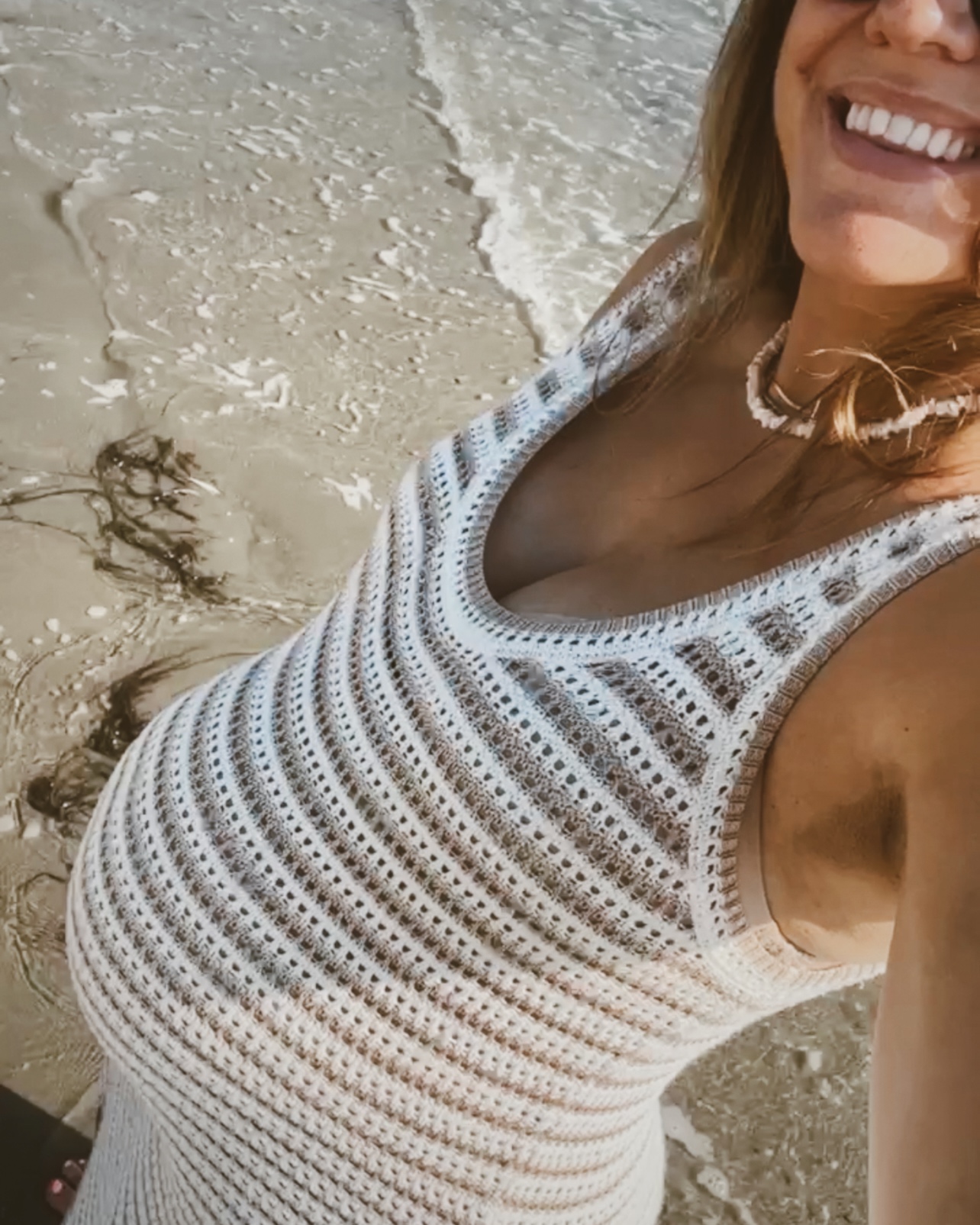
Achondroplasia confirmed, next steps
As soon as the achondroplasia was confirmed, we were given a care plan for the balance of my pregnancy, after birth and into our son’s infancy and childhood.
Currently, we’re booked in for regular scans between now and the birth.
We’re also under the joint care of Guy’s and St Thomas’ Hospital London—which has a specialist unit dedicated to helping children with achondroplasia and other genetic conditions—and Winchester Hospital. We’ll be monitored by both hospitals throughout my pregnancy, after birth and throughout our son’s childhood.
Alongside the regular growth scans, we also have an MRI scan booked at Guy’s and St Thomas’ Hospital. The technology for this is awesome. While still pregnant, I’m able to have an MRI scan of our son in utero. This scan is to gauge a particular measurement for our son’s spinal cord passage, which can be restricted in some children with achondroplasia. He’ll be scanned again shortly after birth, but if they can pick up on the likelihood of a restricted space now, they’ll have more time to plan his treatment in the aftermath of his birth. If the space for his spinal cord is restricted, an operation may be needed while our son is still young.
I cannot overstate how incredible the care we have received has been. Since that first 28 week scan we have been supported every step of the way, oftentimes receiving follow-up calls and appointments—and those all important test results—much sooner than expected.
During one appointment in Southampton our doctor said—with a confidence that made me instantly trust in her—“we’ve got you”. So far, it’s proven to be true.
Birth plan
Prior to our achondroplasia diagnosis, I had been planning for a vaginal water birth in hospital. I was hoping to take a hypnobirthing course and try for as ‘natural’ a birth as possible.
Since the diagnosis, I’ve decided to opt for a planned C-section. Babies with achondroplasia can have larger head circumferences which can make a vaginal delivery more difficult or not possible. Additionally, at this point, Oli and I decided that if there is a way in which we can create some sense of calm ahead of our son’s arrival, then we’ll take it.
I feel really positive about opting for a planned C-section. We don’t yet know the date of it (we’ll find out in the next week or so), but it gives me a lot of comfort knowing that we’ll know the planned date for meeting our baby boy. A planned C-section also allows for a paediatric care team to be on hand for the birth. This team would be on hand whether we went for a vaginal delivery or not, however by planning the date and time they’ll be able to allocate the birth firmly in their diary. We’ll most likely need to stay in hospital for a few days after the birth to monitor our baby boy and to perform a few initial tests.
Through Lauren Doffman (@LaurenPilates), who had a planned C-section for her twins, I discovered Born London. Born London offers a hypnobirthing course for planned C-sections. It was a gift to myself to book on for this and I am so looking forward to starting the course soon.
Though my birth plan isn’t what I anticipated it to be, knowing that I can still incorporate some of the more holistic elements that I was hoping for gives me solace.
Where we’re at now
It’s been an emotional rollercoaster writing this post! I knew that I wanted to get everything down ‘on paper’ so that I could recall what we’ve been through.
Additionally, I wanted to share our story of achondroplasia and finding out that our son has a genetic disorder, in the event that it helps other parents who may be navigating something similar.
At this point, a month into our new reality, Oli and I are feeling SO grateful that we’re on a path to meeting our baby boy soon. There were days when we just didn’t know if it was likely that we’d be able to progress with the pregnancy. Knowing that we can fills my heart with immeasurable joy.
As I write this, I am currently 32.5 weeks pregnant. Oli and I are on our babymoon in Bracklesham Bay and it could not have come at a better time. It’s been phenomenally soothing the be at the beach, to go for daily swims and to quietly process everything we’ve been through and what that means for our future.
I feel deeply connected to my pregnancy again. Our baby boy is kicking with vigour (even as I type!), I talk to him all the time and tell him that we love him and are so sooo excited to meet him.
Knowing that our son has achondroplasia comes with implications for the rest of our family life but we truly believe that we have been gifted him.
Again, the odds of two parents who don’t have achondroplasia themselves having a child that does are minute, some 1 in 40,000.
Our son has always been exactly who he is and we feel that we’ve been lucky enough to be told a bit about him before he’s born. We love him unconditionally (I could cry again just thinking about him!) and are committed beyond measure to supporting and loving him as best we can. We’re also blessed with a network of family and friends who echo our feelings completely.
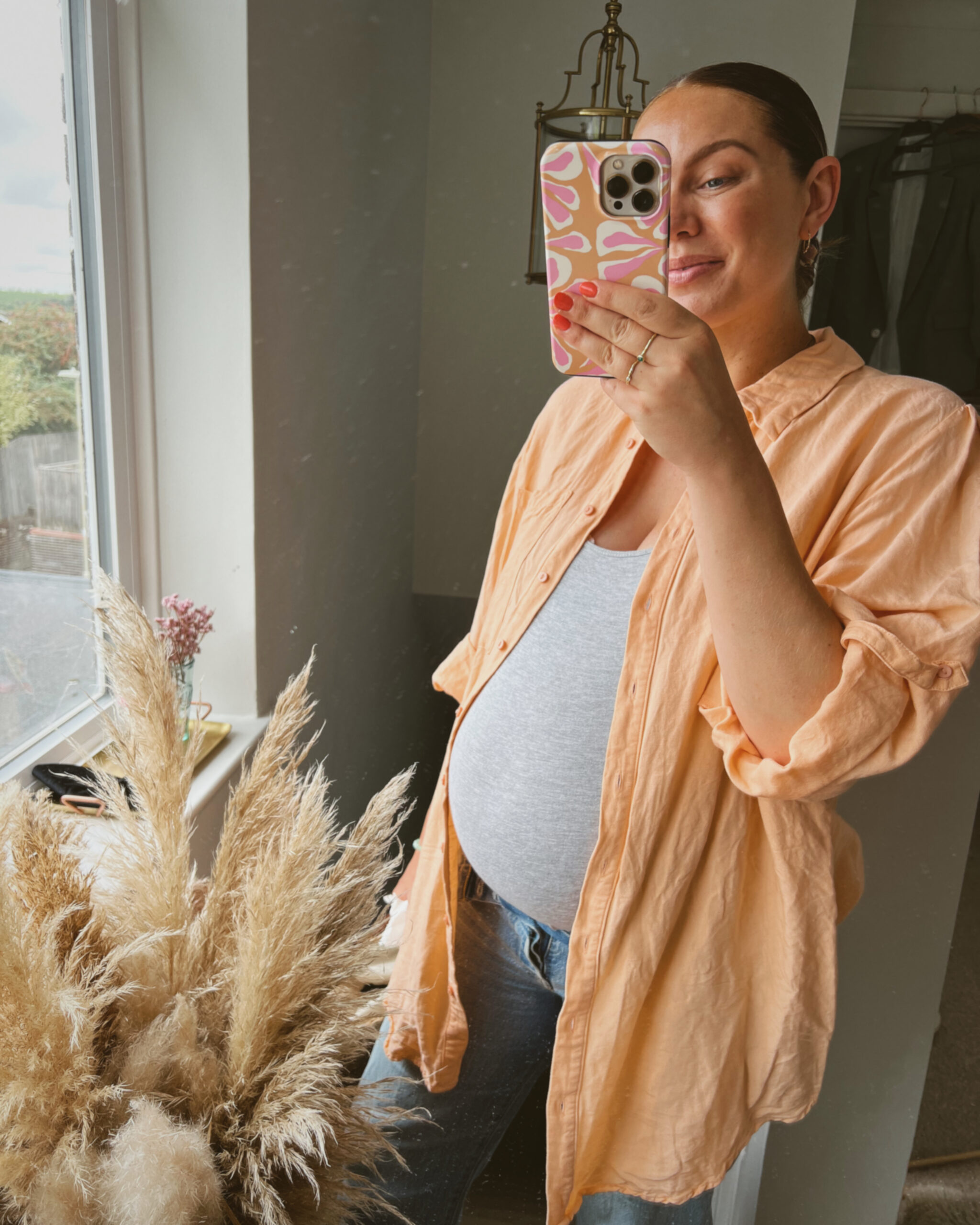
What’s been helpful during this time
When going through difficult times, it can be hard to know what can help. Here are a few things that have personally helped Oli and I:
Telling friends and family
We told friends and family pretty much right away. To cut down on the mental load, we drafted ‘updates’ on our phones and sent them out en masse after appointments. This helped everyone to stay in the loop and allowed us to spread news without having to reinvent the wheel for every message. Inviting friends and family into the fold meant that they were able to support us. We have had the biggest swell of love and support throughout this time which has given us so much strength and comfort.
Telling work
Oli and I both communicated to our work colleagues what we’ve been going through. We tailored the level of information we shared depending on what we were comfortable with. Again our colleagues and clients have been incredible at supporting us. This has also been helpful when it’s come to needing to book time off or adjust schedules to accommodate hospital appointments.
Having an ‘inner circle’
Throughout this process my sister has been texting me every morning and evening with a simple note of love. This has meant so much to me, knowing that she’s there. She’s also been at the end of every phone call and has been my go-to person for deep conversations.
Additionally, Oli and I both have had our own ‘inner-circle’—a group of friends and family who’ve been there to quietly support us. Sometimes that’s meant having conversations, but most often that’s meant just spending time together and ‘being’. And again, those short texts ‘checking in’ have showed us so much love.
Having people around us who’ve met us ‘exactly where we are’ on any given day has been incredible. Our inner circle has been phenomenal, an inconspicuous army.
Not talking about it
For me, not talking about it has been helpful. Not to say that I haven’t talked about it (I have at length with Oli, my family and our inner circle) but otherwise, remaining private has helped.
Naturally every time you share the news with people they have a reaction and I haven’t had the bandwidth to take on other peoples’ emotions.
I’ve found that telling close friends and family via text has been a good way of managing that influx of emotion. People have the opportunity to process before replying to you.
Filtering content
During the most trying times, especially in the weeks when we didn’t know if we’d be able to progress with the pregnancy, I found it really difficult to see any content relating to pregnancy or babies.
I decided to use the ‘hidden words’ feature on Instagram. This allowed me to write a comprehensive list of words which—if hash-tagged on a post—signified to Instagram that it contained content I didn’t want to see. Here’s a tutorial if you want to do the same for any reason.
I found that the ‘filtering’ didn’t happen immediately, but the more I ‘reported’ that content in my suggested feed ‘wasn’t for me’, the faster my feed changed. Generally speaking, I also tapped ‘not interested’ on any baby-related ads, which I was being targeted with constantly.
In general life, I also stepped away from some situations, including my weekly ‘bumps, bands and babies’ class (which I’m now going to again 🙌🏼) and a pre-loved sale for baby clothes and toys. I tried to protect my peace in any way I could.
When it came to TV, podcasts and books, it was a strict good-vibes-only rule.
No Googling
Early on, Oli and I decided to stay away from Google.
We trusted that we were being given all of the information we needed by our doctors.
Outside of that and the documents they shared with us, we stayed away from Googling or seeking out further information. We also asked people not to share information with us, even if they thought it may be helpful.
Focusing on our own health and wellness
The most helpful thing Oli and I have both done is to try and focus, as best we can, on our own health and wellness.
Our emotional health has been through the ringer in the most extreme of ways. However, we’ve both been able to take small steps in maintaining some consistency and control with our health.
For me, that’s meant daily walks (which I’ve preferred taking with company or listening to a podcast so that I’m not left alone with my thoughts), eating nutrient-rich food and prioritising rest and sleep.
For Oli, that’s included regular gym sessions and the same approach to diet and sleep.
Though this period has been a phenomenal test, constantly checking in with ourselves and one another has allowed us to navigate it with as much composure as possible.
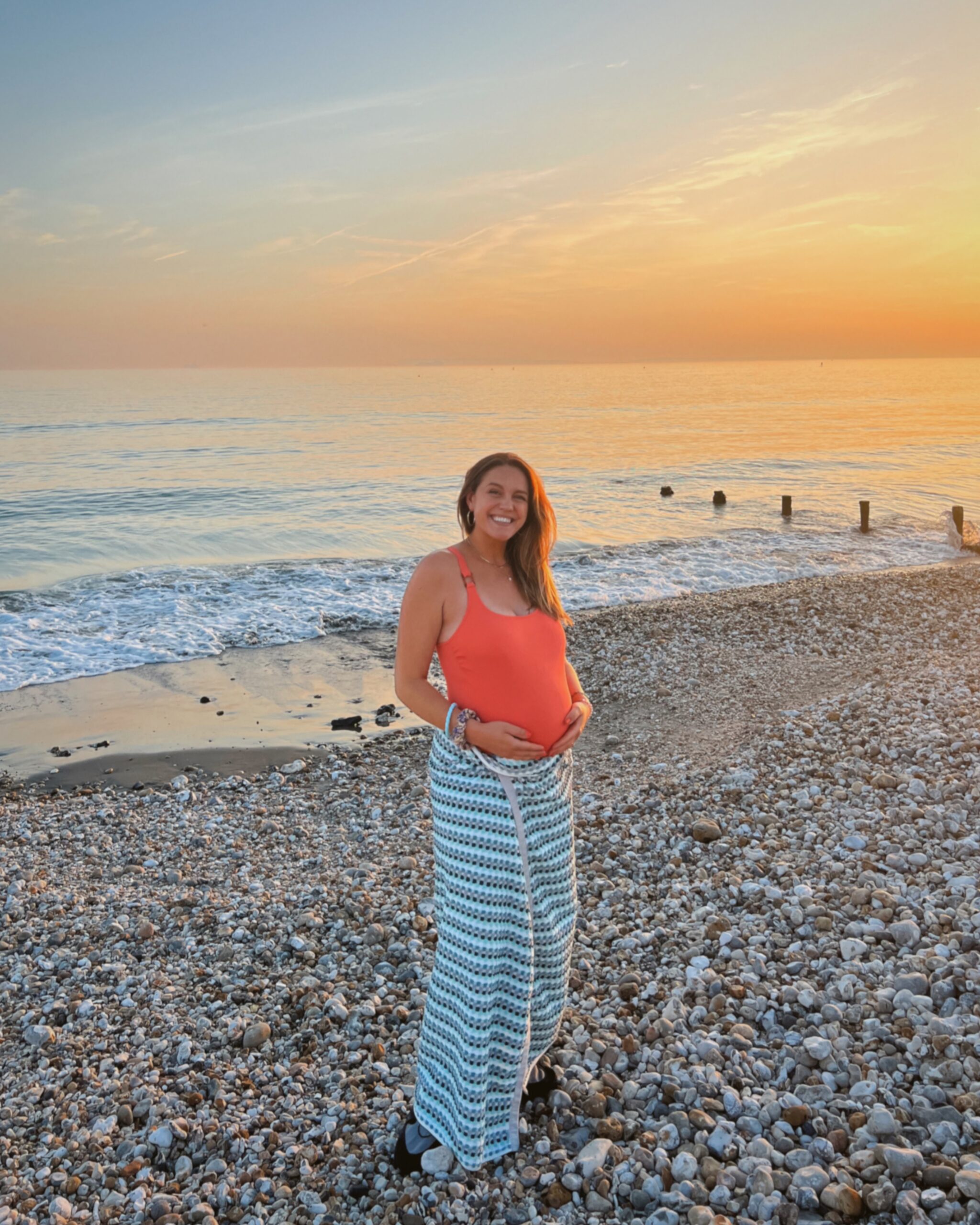
Meeting our baby boy
And so, as things stand, we’re due to meet our baby boy in just a few short weeks! Currently we’ve been told that it’s likely my C-section will be booked around the 39 week mark, making him an early November baby.
Oli and I are both totally smitten with him already and are so SO looking forward to meeting him, holding him and loving him. Get ready for some serious smothering baby boy!
Since going through this experience, Oli and I have discussed many times how it’s ignited a deep compassion in us for any parents going through hardships in pregnancy, fertility and infancy. If you are currently navigating any of the above, I see you and my heart goes out to you.
Though we are so excited to meet our baby, the ripple effects of this experience continue. We’re both seeking counselling to help support us emotionally. We know that this is just the beginning of a new reality we hadn’t anticipated.
We’ll continue to learn and grow as our baby boy does. We’re just so thankful we get to meet him soon.
A note on our baby’s name
Since finding out that we’re having a boy at 16 weeks, we’ve had a name for him. This hasn’t changed throughout that time, however when we found out his achondroplasia diagnosis we looked up the meaning of his name. Amazingly, the meaning cemented how perfect the name is for him. We haven’t shared it with anyone yet, but when the time comes I can’t wait to tell you.
Thank you, as always, for sharing life’s ups and downs with me here. As I said in my first Pregnancy Diary post, I know that many of you have been here since the early days of the blog, and in a way I feel like we’ve grown up here together. This is another chapter of life I’m grateful to be able to share with you.
With love, always, Monica x